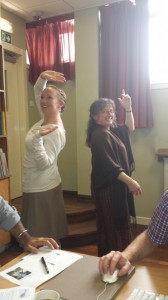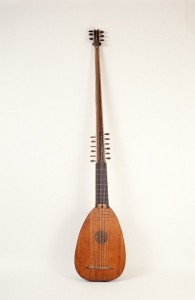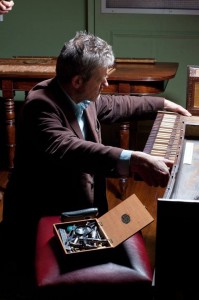Although we are very much focused on our ever-closer decant from St Cecilia’s Hall, it by no means takes all of our thinking time in relation to the St Cecilia’s Hall Redevelopment Project. Despite not even having closed the building yet, all staff are busy making plans for the displays that will go into the building once it re-opens.
This is, of course, one of the most enjoyable parts of our jobs.
What we are doing now will very much decide the “feel” of the new museum. There are all sorts of questions we need to consider – how many instruments are we wanting (how dense will the display be), how do we want to arrange the instruments to tell various stories, how do we keep the visitor interested from start to finish, and (we very much hope) still wanting to come back for return visits, how do we appeal to all types of visitor from professional musicians to those who have no detailed knowledge but want to see the old (and in some cases not quite-so-old) objects.
This is not a one-step process by any means – at present it is the layout of the galleries and showcases, this will be followed by designing stands so the instruments can be clearly and unobtrusively seen, backdrops, creating labels, text for guides, publications and so on.
What is it all actually like, and how does it happen in practice, are common questions. Here are a couple of “behind-the-scenes” photos of the team at work. In front of the computer is Iain Coates of our museum design team Studio SP, who has a programme which allows scaled images of each of the objects to be move into 3D showcase “space”, which is projected onto the screen for us all to see. The software also allows us to view showcases from various viewpoints in the gallery, and even have a complete walkthrough!
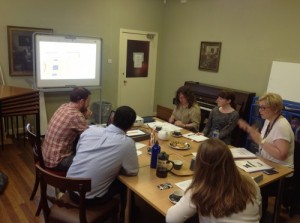
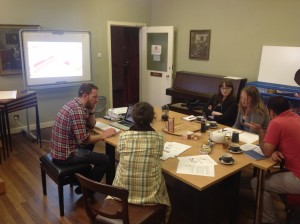
We are nearing the end of all of the open displays, after which our displayed objects will have all been selected (we have, of course, the possibility of tweaking a little as we progress). The chance for a whole-museum walkthrough is being increasingly anticipated.
